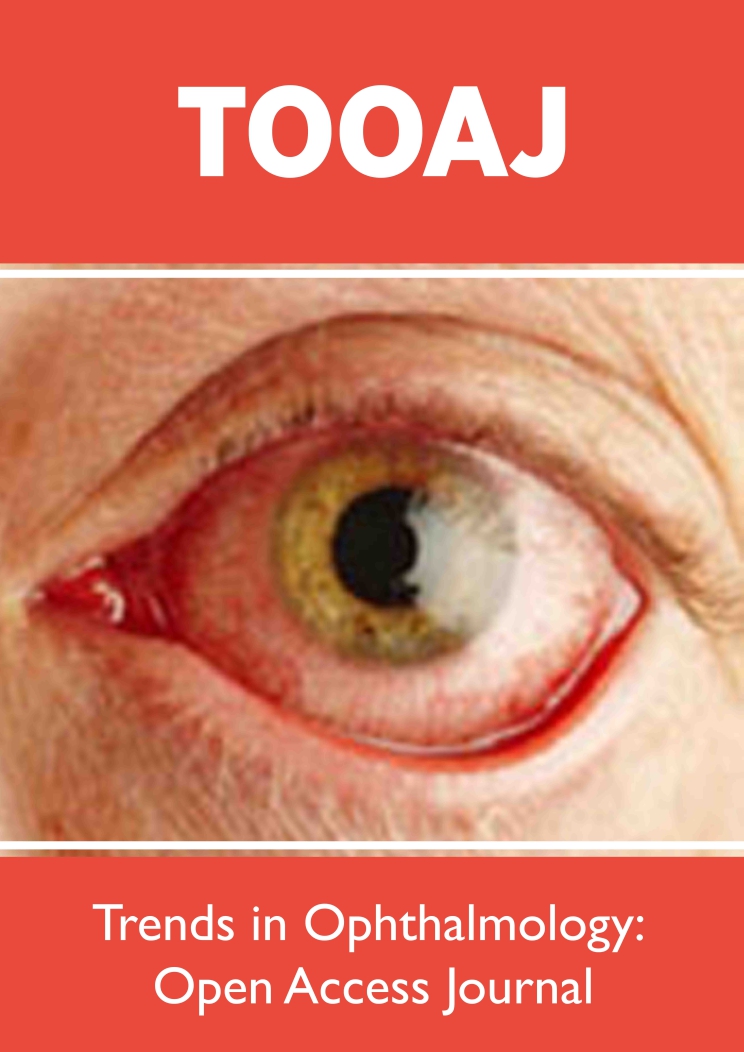-
Case ReportView abstract
 PDF
PDF
 Full text
To report a case of subretinal fluid in dome-shaped maculopathy with spontaneous resolution and consequent improvement of vision up to six years after diagnosis. Additionally, we performed a mini-review of the literature on the treatment of other cases of dome-shaped maculopathy with associated subretinal fluid...... ReadMore
Full text
To report a case of subretinal fluid in dome-shaped maculopathy with spontaneous resolution and consequent improvement of vision up to six years after diagnosis. Additionally, we performed a mini-review of the literature on the treatment of other cases of dome-shaped maculopathy with associated subretinal fluid...... ReadMore -
Case Report
-
Research ArticleView abstract
 PDF
PDF
 Full text
Behçet’s syndrome (hereafter shortened as BS or NBS) is a rare and chronic autoimmune disorder that frequently generates inflammation in several human organs, including the eyes [1-3]. The Turkish..... ReadMore
Full text
Behçet’s syndrome (hereafter shortened as BS or NBS) is a rare and chronic autoimmune disorder that frequently generates inflammation in several human organs, including the eyes [1-3]. The Turkish..... ReadMore -
OpinionView abstract
 PDF
PDF
 Full text
TPhiladelphia-negative (Ph-negative) myeloproliferative neoplasms (MPNs) are a heterogeneous group of hematopoietic stem cell diseases. There are clonal diseases acquired from hematopoietic stem cells and include: essential thrombocytosis (ET), polycythemia vera (PV) and primary myelofibrosis (PMF)[1,2], target disease of this article...... ReadMore
Full text
TPhiladelphia-negative (Ph-negative) myeloproliferative neoplasms (MPNs) are a heterogeneous group of hematopoietic stem cell diseases. There are clonal diseases acquired from hematopoietic stem cells and include: essential thrombocytosis (ET), polycythemia vera (PV) and primary myelofibrosis (PMF)[1,2], target disease of this article...... ReadMore -
Mini ReviewView abstract
 PDF
PDF
 Full text
The history of contemporary laser in situ keratomileusis (LASIK) returns to 1985 when Peyman first presented the idea of performing laser ablation in a corneal flap. In 1990, Pallikaris completed the first LASIK procedure in a rabbit model...... ReadMore
Full text
The history of contemporary laser in situ keratomileusis (LASIK) returns to 1985 when Peyman first presented the idea of performing laser ablation in a corneal flap. In 1990, Pallikaris completed the first LASIK procedure in a rabbit model...... ReadMore -
Review ArticleView abstract
 PDF
PDF
 Full text
Scleritis refers to chronic painful inflammatory diseases of the sclera that can also involve cornea and underlying uveal tract. Pathogenic mechanisms in scleritis are poorly understood, but enzymatic degradation of collagen fibrils by infiltrating leukocytes seems to be a key feature..... ReadMore
Full text
Scleritis refers to chronic painful inflammatory diseases of the sclera that can also involve cornea and underlying uveal tract. Pathogenic mechanisms in scleritis are poorly understood, but enzymatic degradation of collagen fibrils by infiltrating leukocytes seems to be a key feature..... ReadMore -
Review ArticleView abstract
 PDF
PDF
 Full text
To assess the effectiveness of ROCKLATAN, a topical therapy comprising netarsudil and latanoprost ophthalmic solution 0.02%/0.005%, in patients with open-angle glaucoma and ocular hypertension...... ReadMore
Full text
To assess the effectiveness of ROCKLATAN, a topical therapy comprising netarsudil and latanoprost ophthalmic solution 0.02%/0.005%, in patients with open-angle glaucoma and ocular hypertension...... ReadMore -
Review ArticleView abstract
 PDF
PDF
 Full text
Purpose: To review the technology and principles of laser presbyopia and update the future technology trend with a proposed dual-wavelength laser system. Methodology: The accommodation gain (AG) after a laser treatment is governed by multiple factors including: the lens front and back curvature change (or lens thickening), thickening of ciliary body and its apex, the length of anterior vitreal zonules (AVZ), posterior vitreal zonules (PVZ), cross vitreal zonules (CVZ) and the space of ciliary body and lens equation (SCL). The increase of AG and/or SCL can be achieved by softening (or ablating) the sclera to improve age-related loss in forward movement of the vitreous zonules posterior insertion zone. The measured data of accommodative response of the above elements are analyzed. Besides a review of prior publications, the future te..... ReadMore
Full text
Purpose: To review the technology and principles of laser presbyopia and update the future technology trend with a proposed dual-wavelength laser system. Methodology: The accommodation gain (AG) after a laser treatment is governed by multiple factors including: the lens front and back curvature change (or lens thickening), thickening of ciliary body and its apex, the length of anterior vitreal zonules (AVZ), posterior vitreal zonules (PVZ), cross vitreal zonules (CVZ) and the space of ciliary body and lens equation (SCL). The increase of AG and/or SCL can be achieved by softening (or ablating) the sclera to improve age-related loss in forward movement of the vitreous zonules posterior insertion zone. The measured data of accommodative response of the above elements are analyzed. Besides a review of prior publications, the future te..... ReadMore
Lupine Publishers Group
Lupine Publishers
ISSN: 2644-1209
Trends in Ophthalmology: Open Access Journal
Trends in Ophthalmology Open Access Journal (TOOAJ) is a peer-reviewed, international journal of Lupine group that publishes research articles, review articles, and clinical studies related to the sense of sight. This Journal includes new diagnostic and treatment methods, surgical techniques, instrument updates and the latest drug findings. This journal focuses on different aspects of eye surgery such as post lasik conditions and care, surgically induced astigmatism, cataract surgery, corneal transplant success rate, clear corneal incision, post-operative corneal melt, malyugin ring cataract surgery. It also provides major reviews and also publishes manuscripts covering regional issues in a global context.



















.png)
.jpg)

